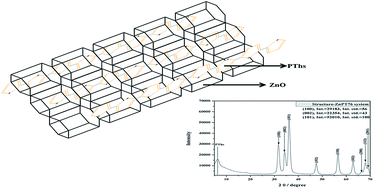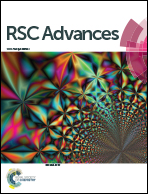A quenching method for the preparation of metal oxide–polythiophene composites having fiber structures
Abstract
In this study we developed a simple quenching method to fabricate metal oxide (CuO, ZnO, TiO2, Fe(OH)3)–polythiophene (PT) composites. By varying the metal oxide, PT, and rate of crystallization, we could control the fiber morphology in these composites. Four-probe-station analyses revealed that the conductivities of these metal oxide–PT composites ranged from 10−5 to 10−3 S cm−1, higher than that of any species of metal oxide alone (from 10−10 to 10−7 S cm−1), because the fiber morphology behaved as an exceptional transmission factor for electrons. Moreover, these metal oxide–PT composites exhibited the characteristics of colloids, as well as high viscosity, suggesting that they could also be applied as coatings on silicon and glass substrates, and could provide the opportunity to form useful materials for large-scale gas sensors due to good flexibility and porosity. UV-vis spectroscopic analyses revealed variations in the energy level (>3.37 eV for ZnO) and confirmed the mechanism of the morphology change of the composite.


 Please wait while we load your content...
Please wait while we load your content...